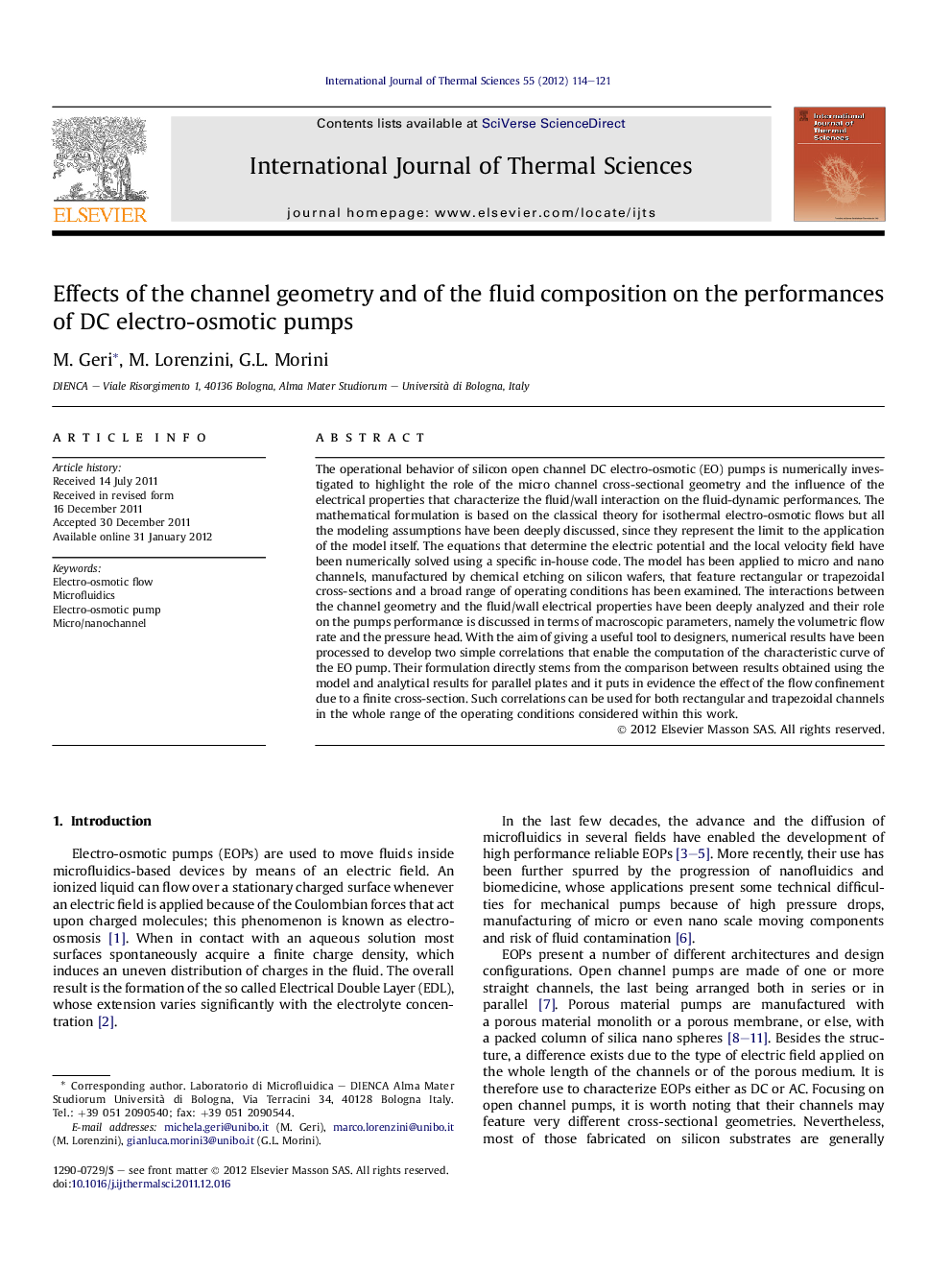| Article ID | Journal | Published Year | Pages | File Type |
|---|---|---|---|---|
| 668844 | International Journal of Thermal Sciences | 2012 | 8 Pages |
The operational behavior of silicon open channel DC electro-osmotic (EO) pumps is numerically investigated to highlight the role of the micro channel cross-sectional geometry and the influence of the electrical properties that characterize the fluid/wall interaction on the fluid-dynamic performances. The mathematical formulation is based on the classical theory for isothermal electro-osmotic flows but all the modeling assumptions have been deeply discussed, since they represent the limit to the application of the model itself. The equations that determine the electric potential and the local velocity field have been numerically solved using a specific in-house code. The model has been applied to micro and nano channels, manufactured by chemical etching on silicon wafers, that feature rectangular or trapezoidal cross-sections and a broad range of operating conditions has been examined. The interactions between the channel geometry and the fluid/wall electrical properties have been deeply analyzed and their role on the pumps performance is discussed in terms of macroscopic parameters, namely the volumetric flow rate and the pressure head. With the aim of giving a useful tool to designers, numerical results have been processed to develop two simple correlations that enable the computation of the characteristic curve of the EO pump. Their formulation directly stems from the comparison between results obtained using the model and analytical results for parallel plates and it puts in evidence the effect of the flow confinement due to a finite cross-section. Such correlations can be used for both rectangular and trapezoidal channels in the whole range of the operating conditions considered within this work.
► Performances depends on: non-dimensional zeta-potential and electrokinetic diameter. ► Geometry plays a role by: the aspect ratio and the cross-sectional area. ► Narrow cross-sections cannot always be approximated as two infinite parallel plates. ► Two correlations have been derived to draw characteristic curves of EOPs.
